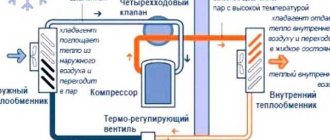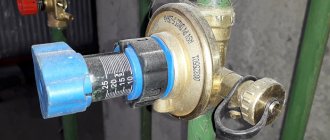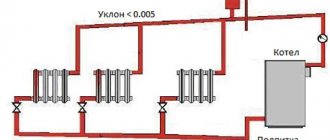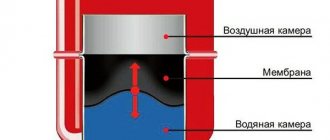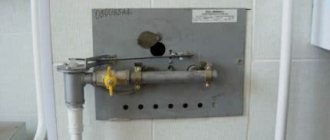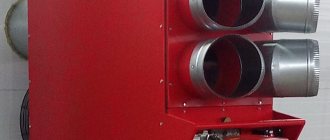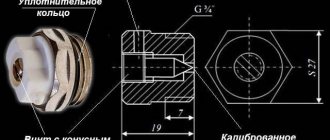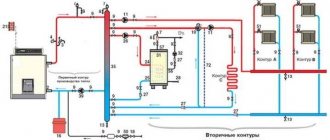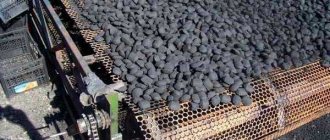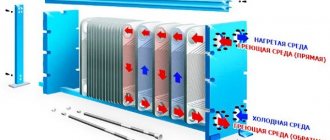Do you agree that when designing and installing gas equipment, a parameter that deserves special attention is operating pressure? Since only if the required values are observed and this characteristic is constantly adjusted, safe operation of the gas system is possible.
Stabilization and reduction of the pressure of the gas in the storage tank is ensured by a reducer for the gas holder, therefore the regulator is an integral part of the system: “gas holder - gas consuming devices”.
Independent installation or replacement of a gas reducer in an autonomous gas supply system at home requires certain skills and knowledge. You need to know what the control device consists of and how it works. Therefore, we suggest you understand the operating principle of the gearbox, the subtleties of adjustment and the nuances that arise when replacing it.
What's inside the gas carrier?
A car arrives - a gas carrier . This is a specialized vehicle for refilling gas tanks. What are its features? There is a container installed on it, in which liquefied gas is filled. This car has a capacity of 15 thousand liters. It can fill 2-3 gas tanks depending on its volume. There is a technological compartment here. It contains all the fittings, all the tools with which the gas tank is filled. These are filling taps, drain taps, and control devices. There is a counter here, a control unit, which, by the way, not every gas carrier uses, but it’s definitely worth paying attention to. Because this unit allows you to remotely monitor how much gas is being drained into your gas tank. This is all written in memory and remains on our computer. You can also connect to this system and already see how much gas has been drained to you and how much gas is in your gas holder. Also an important point.
Comprehensive boiler service
Offering repair and maintenance services for boiler rooms, we have accumulated enormous experience in designing boiler rooms and implementing many projects of various configurations of heating systems and their individual components. The total number of completed projects of the company exceeded 450 in 2014. But designing a boiler room, tying it up and setting it up correctly is only half the battle. Despite the impressive number of successfully completed projects on gasification, design of boiler houses, repair and commissioning of boilers, installation of heating systems, water supply and sewerage of various types of buildings, we implement our main business task in service maintenance
systems we have created.
All our service engineers regularly attend specialized exhibitions on boilers, heating equipment, heating equipment for swimming pools, baths and saunas. Only one who has been trained by all more or less well-known manufacturers and distributors of boilers and heating equipment in Russia - De Dietrich, Rinnai, Grundfos and has the appropriate certificates and certificates of an installation engineer - can be considered a specialist.
We offer services
design, installation, adjustment and adjustment of boilers, startup of boilers and heating systems, service maintenance, cleaning of boilers, as well as advice on boiler selection, training and consultations on heating systems, water supply, sewerage, boiler room automation, water heated floor systems, etc. When selecting heating equipment, we always take into account your actual operating conditions.
Boiler service
By contacting our company, you will have confidence in the reliable operation of your home’s heating system. It would not be amiss to add that you can use the company’s “hotline”. We record the heating system configuration of all our clients and therefore you will receive accurate and timely advice by phone in the event of a boiler or any other heating system equipment failure.
What should the pressure be?
Let's consider pressure sensors . There's a ton of stuff here, a ton of all kinds of taps. These are the ones you need to pay attention to when a gas carrier arrives. This is very important so that you can understand what quality of gas has arrived to you. Good quality propane gas - it has a higher pressure than butane. And for gas tanks, it is propane gas that is required, so that the gas contains as much propane as possible.
In winter you need to make sure that the pressure is not lower than 5, and in summer it should be no lower than 8, or even 9 atmospheres. This means that you have received high-quality gas. This is an indirect indicator, but a very important one. Few people know about this. This is a moment that we even define for ourselves. If we arrived at some wholesale base and filled up with low-quality gas, the pressure will be very low. This will be a signal for us that we need to check. Something is either wrong with the system, or we were simply filled with low-quality gas. Then we start using a density meter, with which we check the quality of the gas. Thus, we understand that we need to change it, or we agree that everything is fine with us and we are already delivering this gas to the customer.
Is it possible for gas tank gas to explode and ignite?
Without air (or rather oxygen), gas does not explode. An explosion can occur if the user first uses all the mixture in the reservoir and then does not refill it correctly. To prevent this from happening:
- It is strictly forbidden to empty the gas tank by more than ¾ of its volume;
- Only specialists should be trusted to fill the gas tank with gas
Gas that has already leaked from the container may ignite. To exclude this:
- Do not light fires near the gas holder (do not burn grass, foliage, etc.) and prevent fire from appearing near it;
- Refrain from welding near the container;
- Use grounding and other lightning protection measures.
Tank purging and safety
Now the refueling driver directly connects the pistol to the gas tank in order to refuel it. A very important point. We pay close attention to this. So that around a radius of preferably 30-50 meters, no non-welding work is carried out, no cutting of metal, so that there are no sparks. Nobody smoked. For safety reasons, it is even forbidden to use mobile phones. Because when filling gas the tank is purged. That is, the gas comes out together with the air. Accordingly, if it accumulates, there is a risk and possibility of fire. By the way, regarding safety precautions, the driver must be dressed in overalls. His legs and arms should be protected as much as possible. Because the gas is at a negative temperature and it can burn the skin quite strongly.
If you are near the gas tank while refueling, you should also be as protected as possible from possible skin injuries.
A noise is heard in the gas tank - this is not yet refueling, but the driver opened the tap so that the excess air pressure that had accumulated there came out. When filling a gas tank, the gas that fills the barrel simultaneously displaces air from there so that the container is completely filled with gas. Because if there is air left in it, it will affect the operation of the boiler. There will be interruptions. Because air doesn't burn, but gas does. We need completely clean gas there. Therefore, to do this, you need to bleed all the air out of the barrel.
What gas is used
What gas is used to fill the gas tank ? This is one of the most common questions in the consumer sphere. We asked - we answer: in most cases propane-butane is used here. This mixture is optimally suited to cover most needs - private and industrial.
Its quality (efficiency) varies from supplier to supplier. The key characteristic of fuel is the concentration of the main elements. It is indicated in the accompanying documents, which the supplier is obliged to provide to the user upon request.
Gas tank service life
The life cycle of liquefied gas storage tanks directly depends on the quality of its performance and proper operation when consuming fuel. The certified service life of tanks produced by NPO SpetsNefteMash is 20 years. If you follow a number of maintenance rules (the plan of which includes gas refilling of the gas tank ), this period can be increased to 40–60 years. Factors that most influence the indicator:
- exploitation;
- compliance with regular service requirements;
- composition and quality of service work;
- execution of the container itself and its equipment;
- composition of the injected gas.
For long-term operation of the installation, it is recommended to carry out a diagnostic inspection (visual) at least twice a year. Defects found in the process should be corrected immediately before further gas consumption. Overhaul of gas tanks for LPG is carried out once every 10 years. Chemical protection protectors need to be changed once every 5 years.
Installation and adjustment - the key conditions for the long-term service of a gas tank for LPG - require the participation of qualified specialists with extensive experience. The same applies to the process of filling a gas tank - it can only be entrusted to trusted performers.
Don't forget about the additional metering device
Let's go back to the car. Let us pay attention to a very important point when receiving gas, when draining it into the gas tank. The draining process began and gas began to flow through the meter. The meter spins in the same way as at any gas station and begins to show how many liters of gas it drains. On ordinary machines, most machines that exist today, this counter is in one copy, as a rule, it is an American LPM counter. They are quite good, they give clear readings. But on our machines, and I recommend that you order machines from such suppliers, this meter is duplicated by an additional metering device. In the form of electronic control. The readings are reflected on the meter and duplicated on this electronic controller. This data is transmitted to the dispatcher in the office. He remotely sees how much gas is currently being poured into your gas tank and, in fact, when receiving gas, you may not even be on the site. You can also view these readings remotely. This is a great convenience and great trust between us, as the company in charge, and our customers.
Preparing the tank for refilling
The consumer's area of responsibility in preparing for refueling comes down to 2 points. First: call the service that provides the relevant services. Second: provide access to equipment.
What a non-specialist needs to know about how to fill a gas tank :
- delivery is carried out by special transport;
- the service company's vehicle is equipped with autonomous gas meters (they show how much fuel is poured into the gas tank for storing LPG);
- meter readings are taken before refueling begins and upon completion (volume control);
- the forced injection system of liquefied gas is powered by electricity (usually the machines are equipped with autonomous power sources, but sometimes it may be necessary to connect locally; in the latter case, service representatives warn the user in advance that there must be access to electricity where the gas tank is being filled
Let's sum it up
In conclusion, we will once again emphasize the main points that you need to pay attention to.
- Be sure to check the data on the meter that is displayed when refueling the car.
- Be sure to check this data with the level gauge that you have installed on the gas tank. They must match. Of course, discrepancies are possible. But they should not be global so that no one can deceive you.
- Be sure to choose a reliable, trusted supplier who has come to you more than once, whom you trust, and with whom you have already established a good relationship.
It would seem that everything is simple - compare the meter readings, compare the gas tank readings and everything is fine. But in life, as a rule, everything happens much more complicated, and there are a lot of emergency situations. And we will try to sort them out with you.
Underground gas tanks. Technical characteristics and scope
LPG gas tanks of the PO type for underground placement at facilities allow free space to be used more efficiently and operational safety increases. Such tanks are a cigar-shaped structure, firmly welded along the sides of the sides from solid sheet low-alloy acid-resistant steel imported from Germany. This production technology allows the gas tank to be filled with liquefied hydrocarbon gases under high operating pressure.
Scope of application of underground gas tanks
. The design highlight of underground gas tanks produced by Faskhimmash LLC is the presence of a high neck (500 mm), which ensures guaranteed and stable evaporation of the gas mixture all year round, and especially in winter, due to deeper underground placement at the customer’s site.
Therefore, unlike tanks with bottom gas discharge for above-ground installations, such vessels do not require additional evaporation of the liquid phase of LPG and can be used both at industrial facilities and for backup gasification of a cottage village or as the main gas supply to a country private house, cottage, or summer house .
The highest degree of reliability in tank production is guaranteed by strict adherence to time-tested German technology. To protect against electrochemical corrosion, the manufacturer uses innovative active and passive protection containing a magnesium anode element. The minimum service life of such vessels is 15 years.
Technical characteristics of underground vessels of Faskhimmash LLC
Refilling gas tanks with liquefied propane-butane gas in accordance with GOST 20448-90 is carried out only for municipal tanks. Stable operation is impossible with a butane percentage above 60. LPG technology is used forcibly if it is necessary to transfer from the liquid phase to the vapor phase.
Main features:
- You can determine which gas is in the gas tank by its elasticity. Mixtures with enhanced characteristics are used.
- Should not have any strong odors. To determine leakage, odorization technology is used.
- Air is much lighter than propane-butane mixture. That is why it is prohibited to install tank systems in closed premises and where gas can accumulate.
- The liquid phase occurs if atmospheric pressure increases or temperature changes.
- High degree of thermal conductivity.
- Characterized by low flammability.
- Releases thermal energy at a certain percentage of combustion.
Gas supply and heating at home: gas holder or gas cylinder?
Gas heating operates from a main line or specialized equipment: a gas cylinder or gas holder. In this article we will look at the design of autonomous gas supply systems and study in more detail and, most importantly, compare gas holders and gas cylinders for storing and supplying fuel to the boiler. Below we will discuss the general principle of operation of the gas system. We will also compare the gas equipment through which fuel is supplied to the boiler and find out what is best to use for heating the house.
How does an autonomous gas system work?
Gas supply and heating operate on a simple principle. The gas passes into the boiler, which ultimately heats the pipes. The best way to supply gas is through the main line. This option is highly environmentally friendly. With its help you can create a warm floor in the room and other useful structures.
True, main gas requires mandatory approval of the necessary set of documentation. Without it, it will not be possible to legally equip a boiler room, chimney and other similar objects. This is due to a whole set of legislative requirements for compliance with fire safety rules and carrying out the necessary base of preventive measures.
In addition to difficulties with documentation, today not all settlements have a gas line. That is why technologists have developed 2 alternative sources of heating for a private home: a gas holder (the main source) and gas cylinders. Each of them has a unique set of pros and cons. To choose the optimal solution for heating your home, it is worth understanding the design principles of each of the listed types of gas equipment.
Let's study the mechanism of operation of gas cylinders and a gas holder, and then draw the line, pointing out their advantages and disadvantages.
Propane
Filling the gas tank with propane is possible when using only a certain mixture of propane - technical (C3H8). Its distinctive parameter is its elasticity, which reaches 35°C. The standard temperature at which propane reaches boiling is minus 42.1. The procedure for selecting the required vapor phase must be carried out even under the condition of natural evaporation. This approach allows the first phase to be collected and liquefied gas to be used even at critically low temperatures.
Features of liquefied gas delivery
Gas is delivered to the gas tank using special transport. The devices are often installed in rural areas. Service companies have to adapt and purchase equipment for which the poor condition of the roads is not an obstacle. The gas carrier cannot be confused with any other vehicle. A container with liquefied gas is installed on a powerful off-road vehicle.
The machine is equipped with special gas meters. The readings are recorded before and after refueling. The gas injection system needs electricity, without it it will not turn on and will not work. As a rule, gas carriers have their own independent power sources. In some cases, it is necessary to connect the equipment to the local electrical network. The client is warned about the latter in advance.
Fig.2
